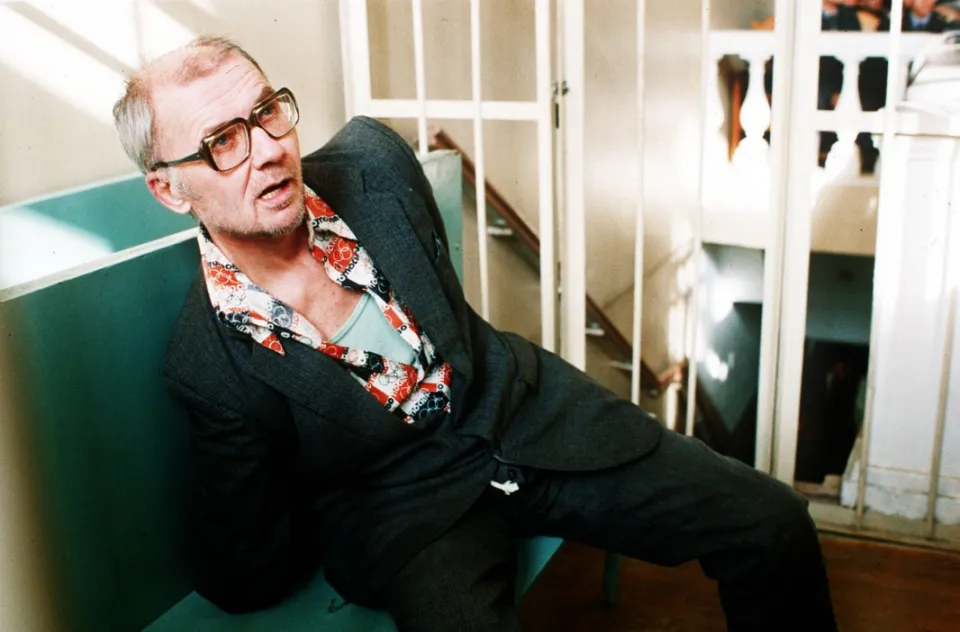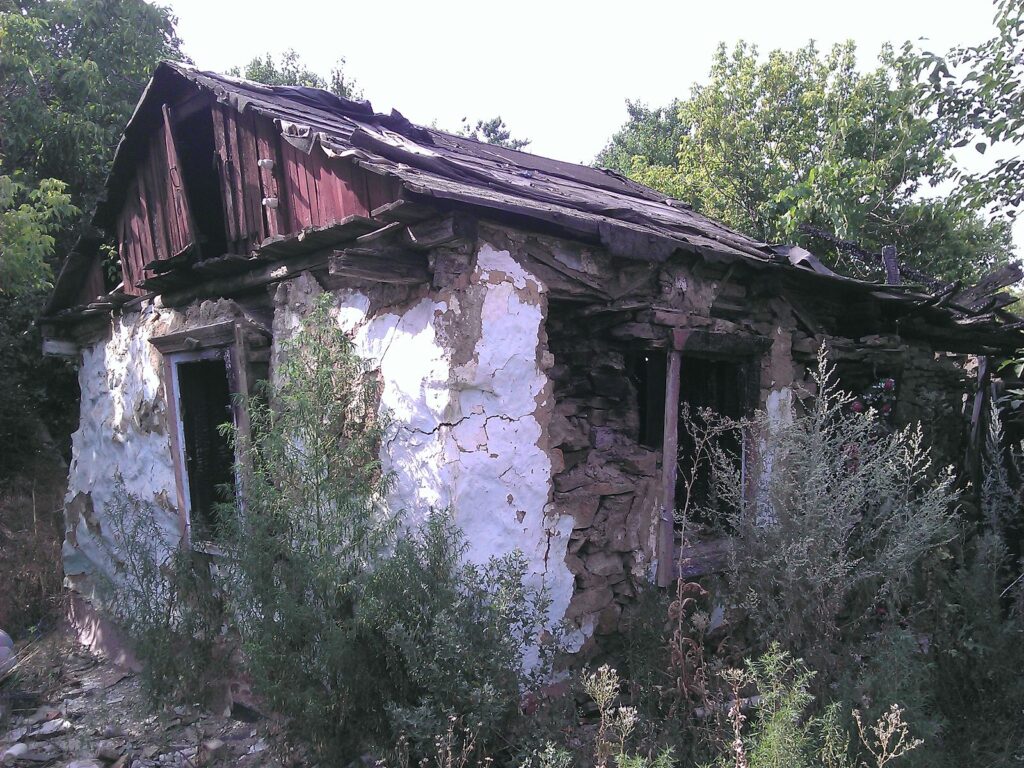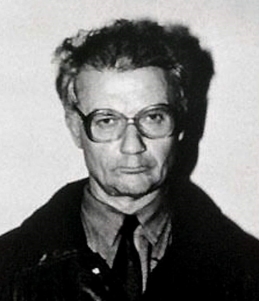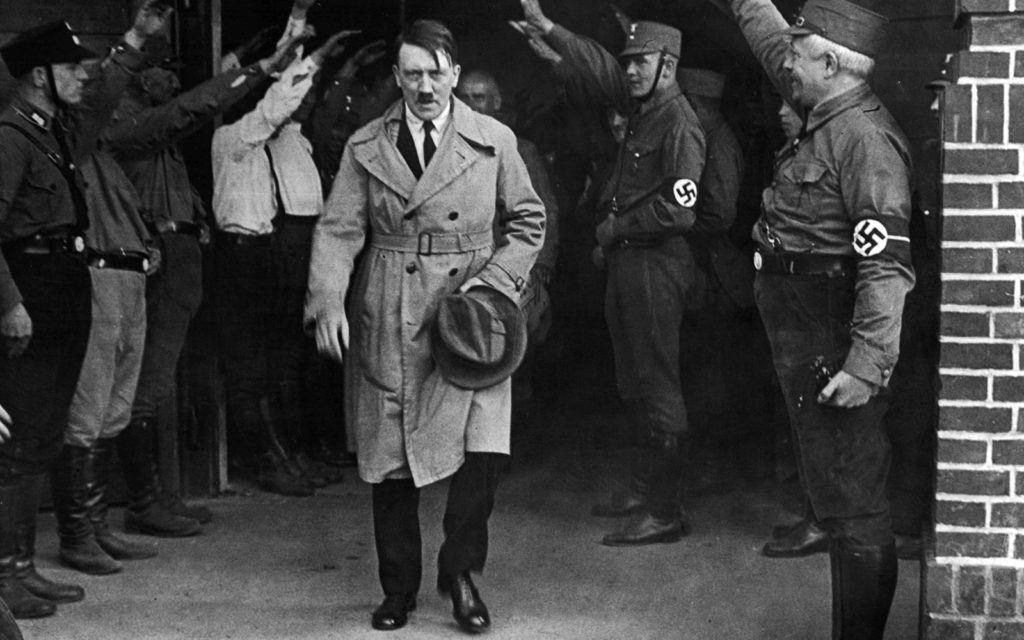Andrei Chikatilo, infamously known as the “Butcher of Rostov” and “The Red Ripper”, was a serial killer who terrorized the Soviet Union during the 1970s and 1980s.
His gruesome spree of rape and murders targeted primarily young children, adolescents, and women. In this article, we will examine the disturbing yet fascinating life of Andrei Chikatilo and the events that led him to be labeled one of the most notorious serial killers in history.

Early Years
Andrei Chikatilo was born on October 16, 1936, in Yabluchne, Ukraine. He grew up amid an ongoing famine and his family had barely enough to eat until he was twelve years old.
Joseph Stalin’s forced collectivization of farms was intended to bring in more food to the cities but instead, it wreaked havoc among the peasants. Things were so bad that according to Chikatilo, his older brother was lured away by neighbors and cannibalized.
In June of 1941, Germany invaded Russia during Operation Barbarossa, thrusting the country into World War II. Chikatilo wasn’t even five years old when his father was drafted by the Red Army and sent off to the front lines.
Chikatilo and his mother were left alone to work the farm and witness the horrors of Nazi-occupied Ukraine.
The occupation traumatized young Chikatilo as he experienced what he would later describe as “horrors.” His childhood was dominated by a sense of constant fear.
Every day there were bombings, fires, and shootings. Seeking refuge, they would often hide in cellars and ditches. Tragically, the war finally came to their doorstep when they were forced to watch their own home burn to the ground.
During the chaos of war, Chikatilo’s mother gave birth to a girl named Tatyana in 1943. The circumstances surrounding Tatyana’s conception were sketchy at best.
Given that Roman had been drafted in 1941 and had been taken prisoner in 1943, it is unlikely that he was Tatyana’s biological father. Speculation arose that Tatyana’s birth might be a result of the widespread sexual violence perpetrated by Nazi soldiers.
Chikatilo was a good student in school but was shy and awkward around the other kids. He was often weak from hunger and fainted on at least two occasions. This made him a target for bullies who teased him about his stature and called his father a coward for being captured in the war.
Things didn’t get easier for Chikatilo as he entered his teenage years. His social awkwardness grew and he had a hard time finding girls that were interested in him.
He was also haunted by the embarrassing fact that he could not perform sexually. This caused him to further retreat from social settings and he became increasingly self-hating.
Adult Life
After graduating from high school, Chikatilo applied for enrollment at Moscow State University, but he was rejected. He firmly believed that he was rejected because his father was a prisoner of war.
Instead of going to university, he chose to go to vocational school where he studied to become a communications technician. He moved to the Urals where he worked for a few years before being drafted into the army for compulsory military service in 1957.
Chikatilo completed his military training in 1960 and moved back to his hometown where he lived with his parents and helped them on their farm. A few months later he landed a job as a communications engineer in the town of Rostov-on-Don.
After relocating there his sister, Tatynana, moved in with him and saw that her brother was lonely and needed a wife. She introduced him to her friend Feodosia and two weeks later they were married.
Escalation of Violence
In 1964, Andrei Chikatilo decided to go back to school and enrolled as a correspondence student at Rostov University, specializing in Russian literature and philology. After years of dedicated study, he successfully earned his degree in 1970.
Just before completing his degree, Chikatilo transitioned into a role managing regional sports activities, a position he held for a year. Following this brief stint, he started a new job as a teacher of Russian language and literature at a vocational school in Novoshakhtinsk.
Chikatilo found it difficult to maintain order within his classes. Students often mocked him, taking advantage of what he claimed was his modest nature. His tenure as a teacher proved largely ineffective.
In addition to his teaching responsibilities, Chikatilo was tasked with making sure that the students were in their dormitories at night. While making his rounds he would often spy on girls as they undressed. This soon escalated into physical assaults on students.
At first, complaints against him went ignored but as the number of complaints increased the director of the school finally said something to him. He told Chikatilo that he should either resign or be fired.
Chikatilo resigned voluntarily and he received no further discipline. This pattern of sexual abuse continued over the years at several different schools until he was fired from teaching for good in 1981.
Becoming a Killer
Chikatilo’s first victim was a 9-year-old girl named Yelena Zakotnova in 1978. He lured her to a hut that he owned and tried to rape her.
When he couldn’t get an erection he strangled and stabbed her to death and threw her body in a nearby river. Despite all the evidence that pointed to Chikatilo, a different person was charged with the crime and later executed.

He laid low for a few years until the urge to kill returned again in 1981. This time it was 17-year-old Larisa Tkachenko.
He saw her standing at a bus stop and struck up a conversation with her. He enticed her to come into the forest with him where he said he would offer her some vodka.
When they got into the woods, Chikatilo threw her to the ground and he tried to rape her. When he couldn’t maintain an erection he strangled her to death then mutilated her body with his teeth and a stick.
For the next 20 years, Andrei Chikatilo continued his murder spree. His victims were often young girls whom he met at bus stops or train stations.
After luring them to an isolated area with the promise of gum or alcohol, he would rape and murder them. He would often gouge out the victim’s eyes because he was afraid his image would be imprinted after death.
A Serial Killer on the Loose
By 1983 the bodies were piling up. Police could no longer deny the fact that they were dealing with a serial killer.
An intense investigation was launched. Police and detectives were stationed at bus stops and train stations across the region in an attempt to catch the killer in the act of luring someone away.
In 1984, police observed Chikatilo talking to lone women at a train station and saw him rubbing himself up against them. They arrested him and took him in for questioning.
He denied being the killer despite the police finding on him an 8-inch knife, rope, and a jar of Vaseline. To be sure he was the killer, the police did a DNA test of the semen found on several of the victims.
To their surprise, Chikatilo’s blood type was A and the killer’s was AB. The police had no choice but to let him go.
Manhunt Intensifies
Over the next six years, Chikatilo continued his killing spree until the discovery of Lyubov Korostik’s body on November 13, 1990, prompted the police to intensify their efforts. They spoke to the officer responsible for surveillance at Donleskhoz station where Lyubov was lured and learned that he had been there.
Investigators, after cross-referencing Chikatilo’s present and past employment records, were able to establish his presence in various towns and cities during the times when several victims had been murdered.
Delving into Chikatilo’s background, they discovered troubling patterns from his teaching days, where repeated complaints of lewd behavior and sexual assault had forced him to resign from two teaching positions.
Chikatilo was placed under surveillance on November 14. Observations revealed his unsettling behavior, particularly when approaching lone young women or children on trains or buses, and engaging them in conversation.
After six days of surveillance, on November 20, as Chikatilo left his house with a large jar filled with beer, he was arrested by plainclothes police officers.

Police searched Chikatilo and found a folding knife and some rope. He insisted that the police had the wrong person and cited his 1984 arrest and release.
Investigators also noted that Chikatilo had a wound on his hand that medical examiners stated was from a human bite. They took another sample of his blood but it still didn’t match the AB type that was found in the semen left on the victims.
But with so much evidence pointing at him, the medical examiners decided to also get a sample of his semen. This time the results came back AB – they had a match.
After the results proved that he was the killer, Chikatilo confessed to 53 killings. He gave explicit details about the crimes that confirmed to investigators that he was the killer.
On February 14, 1994, the court found Chikatilo guilty of 53 counts of murder and various additional charges, including sexual assault and mutilation, and he was sentenced to death.
Andrei Chikatilo’s execution was carried out that same day by a single gunshot to the back of the head, a method commonly used for capital punishment in Russia.
What We’ve Learned from Chikatilo’s Case
Andrei Chikatilo’s case serves as an example of how early childhood development and parenting can shape the formation of individuals who grow up to become serial killers.
Born into a war-torn Soviet Union, Chikatilo’s early years were marked by trauma, economic hardship, and the psychological strain of his father’s conscription and capture. Bullying and humiliating experiences during his formative years compounded the emotional toll on him.
As he struggled with bedwetting and faced mockery from his peers, the seeds of resentment, social isolation, and a distorted self-image took root. These early experiences, coupled with a troubled relationship with his parents and an inability to form healthy connections, contributed to the development of a disturbed individual.
Understanding the intricate interplay between nature and nurture in Chikatilo’s upbringing is crucial in comprehending the factors that can potentially lead to the creation of serial killers. This emphasizes the imperative role of early childhood experiences in shaping the trajectory of an individual’s life.
References
Andrei Chikatilo
https://en.wikipedia.org/wiki/Andrei_Chikatilo#Trial
Inside The Gruesome Murders Of Soviet Serial Killer Andrei Chikatilo, The ‘Red Ripper of Rostov’
https://allthatsinteresting.com/andrei-chikatilo
Andrei Romanovich CHIKATILO
https://murderpedia.org/male.C/c/chikatilo.htm
Collectivization in the Soviet Union
https://en.wikipedia.org/wiki/Collectivization_in_the_Soviet_Union

